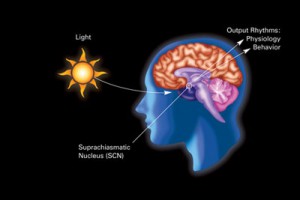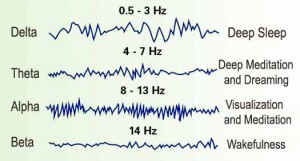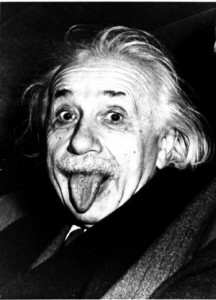Mindfunda's Susanne van Doorn was invited by the Societas Studiosorum Reformatorum Eindhoviensis or SSRE in Eindhoven to give a presentation to celebrate their 58th anniversary. The motto of their anniversary was Living the dream, so they reached out to me to talk about dreams. This Mindfunda is a transcript of the 'Living the Dream' presentation of September 14, 2015.
Living the dream, a cultural perspective
When I went away to University in the eighties, I had the Western idea of Living the Dream in mind. I was going to live on a beach somewhere, with lots of sun and lots of swimming. I would find myself a nice hunk to spend my life with and I would find a challenging job that payed well. It looked a bit like this:


I know a lot of you share that view on ‘Living the dream’ with me. It is a cultural phenomena. A Western cultural ideal. How can we use something as individual as a dream to help us reach that goal? Let’s define dreaming using physical and psychological elements. I will give two techniques that will help you direct your dreams in a certain direction. They will help you reach your goals. Finally I will give you some great examples that will convince you that dreams can help you with Living the dream.
Let’s get philosophical
Are you dreaming right now? Do you ever wonder during the day if you are dreaming? Patricia Garfield did some research into common dream themes. Getting educated (by reading this blog) is one of the most common dream themes. So are you quite sure that you are not dreaming right now?
You could perform a reality check: count the fingers of your hands. Carlos Casteneda wrote about it in the seventies and lots of people learned to lucid dream by looking to their hands before falling asleep. Hands are always with you. Looking at your hands before you fall asleep and telling yourself to look at your hands during your dream to remember yourself that you are dreaming seems to be a sure technique to reaching lucidity in your dreams. Robert Waggoner used this technique to acquire the basic principles of lucid dreaming.

The question ‘are we dreaming right now?’ is the inheritance of Descartes. Descartes thought us to question everything. Yourself, your body, reality. we get taught to think that way in our universities and high schools. Descartes claimed that he existed because he was a thinking person: cogito ergo sum, I think therefore I am. But that caused us to make a distinction between our mind and our body. And that is how I am going to define a dream. I will define three elements of physical dreaming and three elements of psychological dreaming. After doing that we can go back to “living the dream” and see how we can dream ourselves a way into this Western ideal.
Living the dream: technique #1
So how do you know if you are dreaming at this moment? There is a technique, introduced by Carlos Casteneda in the seventies. Looking at your hands and counting your fingers. When this becomes a habit you start to do this in your dreams. In your dreams your fingers look different. And you always have your hands with you. Before you go to sleep: relax your body, look at your hands and say to yourself: I will look at my hands in my sleep and realize that I am dreaming.
There are more reality checks: looking a watch or a clock two times. The second time the clock hand will point at a different number.
Turn on the light: in your dream this is not possible.
Go back in time: wonder what you did before this event. In a dream you will not be able to remember a natural sequal of events.
So with this technique in mind, let’s define dreaming. I will cut up the dreaming process in physical and psychological elements.
Three Physical elements of dreaming

#1: The supraciasmatic nucleus takes care of our day – night rhythm. It regulates your body clock. Light reaches into your eye, and regulates this nuclei. It is one of the reasons why you better not wear sun glasses in the summer. And why you should dim the lights at night. When people can not fall asleep, I often give them the advice to talks a walk in the dark. Movement and darkness are ways of resetting the supraciasmatic nuclei. Darkness is the sign for the tryptophan in your body to be transferred to melatonin, which make you fall asleep. So don’t buy melatonin in the supermarket. Turn out the lights on time and go out for a walk in the dark!
#2: Brainwaves are a certain indicator of your state of awareness. Especially the Delta and Theta waves are present during sleep. REM sleep occurs during Theta waves.

During Delta waves there is Deep Sleep. Sleep with no awareness. the total darkness. I will be interviewing Evan Thompson for Mindfunda soon. in his book Waking Dreaming Being, he devotes a whole chapter on this kind of sleeping. Where is the Self, The I, the awareness during this state? Is it a kind of ‘death’? or is there a sense of awareness?
The Rapid Eye Movement (REM sleep we got to know and love during the fifties appears in the Theta sleep. It was during REM that Stanley Krippner woke up his dreamers in his telepathy projects. He wanted to research of dreamers could be influenced by an outsider. In his experiments he got art, he got a dreamer and he got a sender in his dream lab. An artwork was randomly selected, the sender started concentrating and the dreamer started dreaming. Whenever the dreamer reached REM sleep he was woken up and a dream report was written down. This report was judged by an independent jury and scored on various points. Krippner published some amazing results, dreamers did manage to report dreams that showed fragments of paintings in a very accurate manner.
#3: Inhibition of the spinal motor neurons. We do not move in our dreams from the neck down. We can turn around in our bed, but we do not get up and act out our dreams, because of this inhibition. Here you can see a dreaming cat who is acting out its dreams. Now you can see why this inhibition has been an evolutionary advantage.
So now we have defined the physical elements of dreaming. We are buckled up, let’s go ahead and explore the psychological elements of dreaming.
Psychological elements of dreaming
#1: First of all, you dream in images. In 2012 Japanese researchers could provide us with images we are dreaming, as you can see in this film. Impressive huh? What a work that must have been. The decoding of the human brain will leap us into new mysteries to be explored. Did you notice the beginning of this film is a scene from Inception? Leonardo di Caprio is a lucid dreamer, not only on-screen but also in real life…
#2: The second psychological element of dreaming is: you dream in symbols. this little film I found tells you more about it.
I only have three remarks about it. Being chased is not necessarily a bad thing. It can lead to lucidity. A very well-known lucid dreamer had nightmares when he was a kid, He was being chased by a monster. He was so frightened he did not dare to go to bed at night. But his nother said to him: why don’t you just turn around when you see that monster again and ask him what he wants from you? So the dreamer did just that and found out that the monster was not meaning any harm. The monster said: “I want to tell you something, but you always run away”
Falling in your dream does not have to symbolise failing. It is also a reflection of the energy level of your body decreasing. Just let yourself fall down and start to fly. Enjoy the process.
I know that it is a common assumption that all characters in a dream are reflections of you. But not always… I did some research (you can download it here). I had several dreams about meeting people who had dreamed the same. So one day i decided to do an experiment. I got 15 couples. Every couple of dreamers were supposed to meet each other in a dream. One had a gift, the other was the receiver. After the night of dreaming I collected all the dream reports. And… Several couples indeed had met each other and reported the right gift in their dream reports.
The third psychological element of dreaming are emotions. A lot of people see emotions as the key to giving meaning to a dream. Te film Inside Out gives such a good representation of our basic emotions. Fear, Anger, Disgust, Sadness and Joy. When you look at the world we live in, only a few of these emotions are tolerated. Joy is accepted as a public emotion. Anger is tolerated when it comes out as dominance or sarcasm. But you must never be to angry, too sarcastic, too sad or too fearsome. Showing disgust makes you an arrogant person. So most of us have gotten used to hiding our emotions. Dreaming is reconnecting with your emotions. To get to know yourself better. To accept that those emotions are just part of life.
Now we have defined the elements of a dream, it is time to tell you about the second tecnhique you can use to dream your way into a better future.
Living the dream technique #2 Incubation
Dream incubation is an old technique. It was used in ancient Greece in the dream temples of Asclepius. You concentrate on what you want to dream about. You write down your problem. preferably before going to bed. And you end with writing down one positive formulated sentence. A sentence that reflects your dream question in a positive way. “What is the best for me right now?” or “What do I need to know about …?” And while you are in bed dozing off, mumble that sentence. Do not forget to tell yourself that you will remember and understand your dream each time after mentally stating your dream request.
You might not remember a dream your first night. And maybe even the second night. But you will remember a dream if you keep doing this. The more you practice this technique the better you will become.
Living the dream by using your dreams
There is one technique, besides lucid dreaming that I have not talked about. It is called incubation. The ancient Greeks used it in their dream temples when they wanted guidance for their health. And so can you. Here is what you do.
You write down a specific wish/problem/subject you want to dream about. during the day and again before sleep. You write down what you what to dream about and you finish with one clear positive sentence that states your request. ‘Tonight I will dream about … in a way that I will remember an understand’. Mumble those words as you doze off to sleep.
Living the dream consists of three things that go well in your life: love, your career and your health. I will tell you stories about dreams that have changed the lives of people in those three areas that are so important. All three areas are a reflection on who you are or on who you want to be in this life that you are given. These dreams will make you see that by dreaming, you can turn your world around for the better.
Living the dream: love
Justina Lasley found the man of her dreams by remembering a dream. In her book Wake up she tells us:
‘My dreams and intuition were instrumental and informative as I met and married Chad Minifie, the man of my dreams. One day I had tearfully shared my previous night’s dreams with my very intuitive friend Cathy. The dreams were brimming with sadness about not having met the man with whom I would share my future. She stopped me, saying she sensed from my dreams that I already had a connection to the man I would marry. As strange as it still seems to me, she was right. I followed her suggestion: I closed my eyes and tried to connect with the love I yearned for. I quickly felt a connection to both New England and England, which seemed very bizarre. I didn’t know many people in New England and had never spent time there…
The feeling of that experience stayed with me for several weeks. After a month or so, on e-Harmony (how can it be?) I met a man who lived on Hilton Island and decided to meet him for dinner in Charleston. Soon after being seated I asked, “Where are you from originally?” I am still in awe of his answer: “Well, I have spent most of my life in New England, but my family comes from England”
Dreaming and intuition are twin sisters. If you want to hear Justina tell more powerful stories about changing your life for the better using dreams as a guide you can watch the Mindfunda interview with her.
Living the dream: Career

It was a dream that guided Einstein towards his theory of relativity. When he was 16, his grades in school were bad. His father said: “Son, I am giving up on you. Why don’t you become a plumber!”. Einstein was very upset because he felt he was smart. That night he had a dream that would nurture him into his fertile future. The dream that had all the ingredients of his discoveries.
‘In my dream I am on the top of a hill, covered with snow. My friends are with me and we all have sledges. We start to glide down and we all laugh and have fun. But my sledge is going down real hard and soon I go with the speed of light. I leave my friends behind me. When I look up to the sky I see the light fall apart into a spectrum.’
Einstein told this dream at the end of his life. This dream had been a secret inspiration for him. He told the interviewer that whenever he felt down or uninspired, he remembered the feeling of this dream.
Living the dream: Health
A dream can save you life. If you listen to the podcast of my dreams and health panel for the IASD conference in 2013 you can hear impressive examples.
But the story of Rita Dwyer and her colleage Ed Butler is one of the most impressive stories around. Ed had several dreams about saving Rita from a fire. He opened the door (we all know that you should not open a door when the door handle is hot or smoke comes out of the doorway. The flames will burst out because of the oxygen coming in). He got into her burning laboratory and got her out alive. Against all odds.
When they were in hospital Rita asked him: “Why did you open the door, and put your life in danger? You know it is against all formal regulations?” And he told her he had saved her in recurring dreams. “I knew I was going to survive this. I knew what I had to do, I had done it before in my dreams”. And that is one other good thing about dreams: they rehearse possible futures. You are able to dream the future. Perhaps it is better to say: dreams will rehearse several possible futures for you.
I want to thank SSRE for inviting me, and my colleague Hans van Nuland for his contribution to my ‘Living the Dream’ presentation.
Do you like this post? Feel free to share!
Please sign up for my YouTube channel to enjoy all the beautiful Mindfunda interviews with inspiring people. People like Jean Benedict Raffa, Anne Baring, Connie Kaplan, Ralph Metzner, Stanley Krippner and P.M.H. Atwater, Catherine Wikholm about her book the Buddha Pill and Justina Lasley about her book Wake Up to Your Dreams: Transform Your Relationships, Career, and Health While You Sleep!
GRAB YOURSELF A FREE E-BOOK AND LEARN ALL ABOUT MUTUAL DREAMING USING THIS LINK
Join me on Facebook
Twitter @susannevandoorn
THIS CONTENT IS CREATED BY SUSANNE VAN DOORN, AUTHOR AND OWNER OF MINDFUNDA; MAKING THE FUNDAMENTALS OF PSYCHOLOGY, MYTHOLOGY AND SPIRITUALITY EASY TO USE IN YOUR PERSONAL LIFE!
What is Mindfunda about?
My name is Susanne van Doorn, I am a Dutch psychologist, blogger and author. I have been working with psychology, dreams and mythology ever since I finished my study in psychology at Tilburg University. I made this independant site to share insights, and recent scientific articles about the brain, dreams, and mythology for use in your personal life.
This posting is categorised as Dreamfunda:
Everything you need to know about dreams. Practical How to’s, the latest scientific research, the most commonly used ways to attach meaning to dreams. This and more is given to you for your everyday use in this part of Mindfunda
Read more about Mindfunda here, or visit our Courses Page.
Ready for more free Mindfunda content on ‘#DREAMS‘?

Spiritual Soul Searching: Mindfunda Course

Dreaming with the New Moon

Elephant in dreams: 3 archetypical implications
Comments or suggestions? Share your thoughts:




